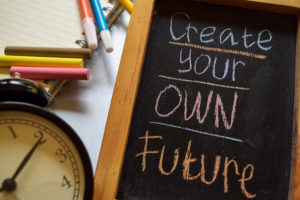In the labyrinth of life, finding purpose is akin to discovering a hidden treasure. This journey leads to fulfillment, meaning, and intentional living. Beyond mere career aspirations or social achievements, purpose transcends into the realm of personal fulfillment.
Passions ignite our souls, infusing us with enthusiasm and excitement. They are the activities we’d love to engage in constantly, making our hearts race and our spirits soar. But passions aren’t limited to leisure pursuits; they can also intertwine with our work, driving us to dig deep into challenges and sustain us through setbacks.
But how do you find your passions? It can be hard to tackle such a daunting task. So, here are some steps that might help:
- Create a Personal Vision Statement
- Craft a personal vision statement—a vivid picture of what you aspire to achieve personally and professionally. Visualize your dreams, aspirations, and the impact you want to make on the world.
- Uncover Your Values
- Reflect on your core values. What drives you? What principles guide your decisions? Understanding your values provides clarity and helps align your passions with your purpose.
- Find Your True North
- Navigate toward your true north—the direction that resonates with your soul. Explore activities that light you up, even if they seem unrelated to your current path.
- Make a List of Things You Love
- Jot down activities, hobbies, and interests that bring you joy. Whether gardening, writing, volunteering, or cooking, these clues reveal your passions.
- Assess the Things You Don’t Love
- Sometimes, identifying what we don’t enjoy sheds light on what truly matters. Eliminate draining activities and create space for what energizes you.
- Acknowledge Your Strengths and Achievements
- Reflect on your accomplishments. What skills have you honed? Celebrate your strengths—they often intersect with your passions.
- Practice Journaling
- Writing unlocks insights. Journal about your experiences, moments of flow, and instances when time seemed to stand still. These glimpses reveal your passions.
- Embrace a Mindfulness Practice
- Mindfulness sharpens self-awareness. Engage in meditation, deep breathing, or mindful walks. As the noise fades, your passions emerge.
Pursuing passions isn’t only about doing what you love—it’s about doing what aligns with your core being. When you care deeply about something, you naturally want to do more of it. Purpose precedes passion, and your passions can illuminate your purpose. Ask yourself: Why do I have this fuel? What drives me?
Remember, the journey to purpose isn’t linear. It involves exploration, reflection, and sometimes unexpected turns. But as you uncover your passions, you’ll find the golden thread that weaves fulfillment into your life’s fabric. So, embrace the adventure, ignite your passions, and let purpose guide you toward a more meaningful existence.



